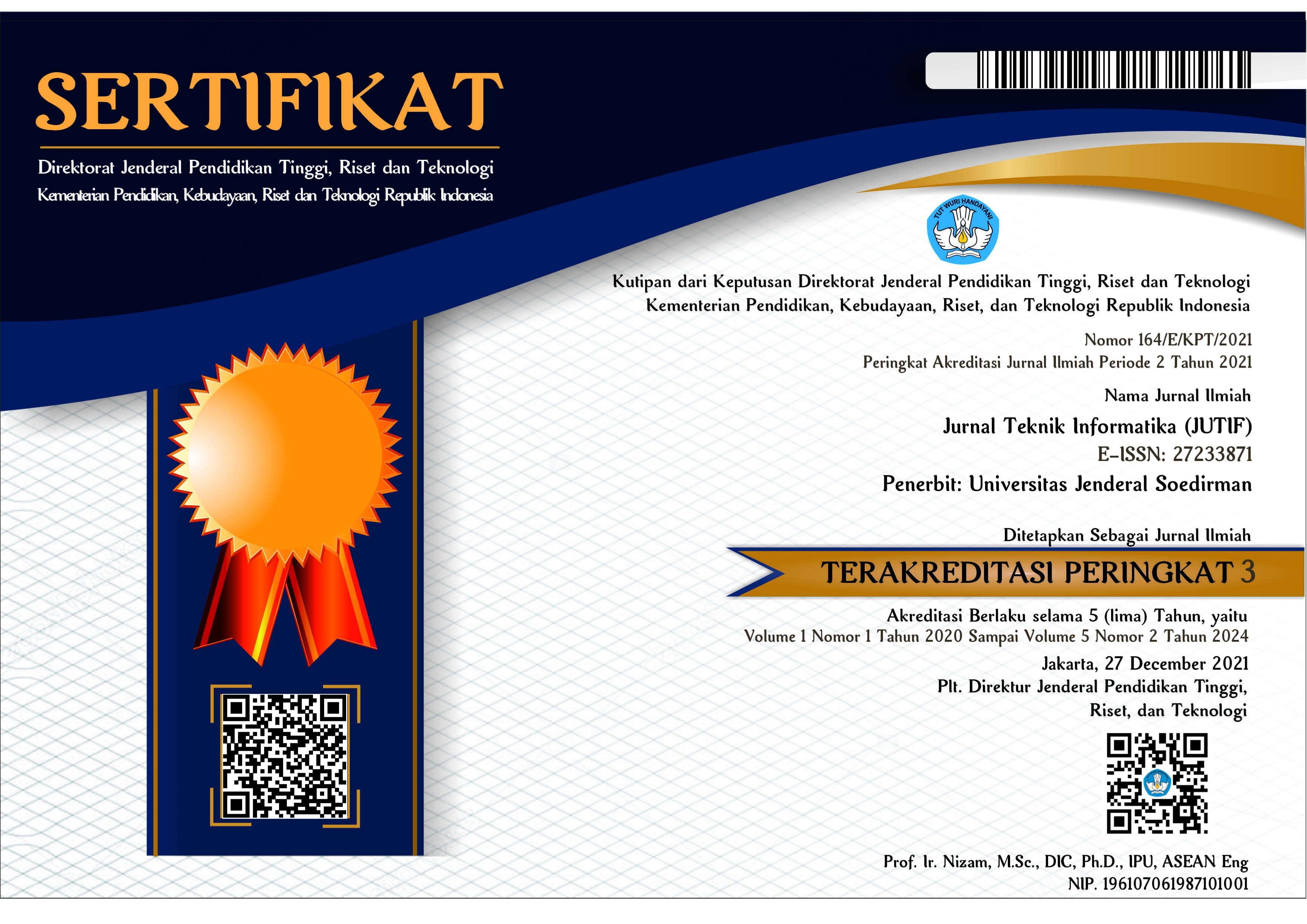PARALLEL COMPUTATION DESIGN OF DETERMINANT AND INVERSE OF A MATRICE USING COMPUTATIONAL GEOMETRY ANALYSIS TECHNIQUE
DOI:
https://doi.org/10.20884/1.jutif.2022.3.1.151Keywords:
Computation Domain, Computational Geometry Analysis Technique, Dependence Acyclic Graph, Gauss-Jordan method, Parallel ComputationAbstract
The aim of this research is to study the use of computational geometry analysis technique in detail to design a parallel computation to determine determinant and inverse of a matrice using Gauss-Jordan method. In comparing with dependence graph technique, it is well known that computational geometry analysis gives us an easier way in determining determinant and inverse of a matrice, moreover for handling a computation domain with dimension of higher than 3. The type of scheduling function used in this research is of linear type. Some important facts are discovered in this research, the most important one is, this technique gives us the ease in arranging data scheduling scheme based on the observation of the computation domain. The other important fact is, it is also give us the ease to understand the scheme of the data scheduling since this technique can be collaborated with dependence graph technique for visualizing the data scheduling
Downloads
References
E. Fernando, D.F. Murad, and B.D. Wijanarko, “Classification and Advantages Paralel in Process Computing: A Systematic Literature Review,” 2018 4th International Conference on Computing, Engineering, and Design (ICCED), 2018, doi: 10.1109/ ICCED.2018.00036.
A. Ahmad, M. M. Yousaf, S. Sarwar, W.U. Qounain, L. Aslam, and M. Khali, “Optimized Scheduling for Parallel Computing Environment,” Sindh University Research Journal (SCIENCESERIES), SindhUniv. Res. Jour. (Sci. Ser.) Vol. 50 (002) 295-302 (2018, 2018, doi: 10.26692/sujo/2018.06.0050.
B. Bramas and A. Ketterlin, “Improving parallel executions by increasing task granularity in task-based runtime systems using acyclic DAG clustering,” PeerJ Comput. Sci. 6:e247, pp. 22-47, 2020, doi:10.7717/peerj-cs.247.
Rihartanto, A. Susanto, and A. Rizal, “Performance of Parallel Computing in Bubble Sort Algorithm,” Indonesian Journal of Electrical Engineering and Computer Science, vol. 7, no. 3, pp. 861-866, 2017, doi: 10.11591/ijeecs.v7.i3.
R. Pandey and N. Badal, “Understanding the Role of Parallel Programming in Multi-core Processor-based Systems,” 2nd International Conference on Advanced Computing and Software Engineering (ICACSE-2019), 2019, pp. 365-368. https://ssrn.com/ abstract=3350311.
A.M. Bhugul, “Parallel Computing Using Open MP,” International Journal of Computer Science and Mobile Computing, 2017, vol.6, issue.2, pp. 90-94.
H. Wang, Y. Guo and H. Guo , “A Method of Ultra-Large-Scale Matrix Inversion Using Block Recursion,” Information Journal, pp. 523-527, 2020, doi:10.3390/ info11110523.
E.G. Almeida, Y. B. Moreno, Y.H. Erfano, M. Vera, M` Mora, and R. Barrientos, “Parallel methods for linear systems solution in extreme learning machines: an overview,” Journal of Physics: Conference Series, 1702 (2020) 012017, 2020, doi:10.1088/1742-6596/1702/1/012017.
H. Singh, D. Chander, and R. Bhatt, “Parallel Computing of Matrix Multiplication in OPEN MP Supported Codeblocks,” Advances and Applications in Mathematical Sciences, vol. 18, issue 8, Pages 775-787, 2019, Mili Publications.
R. Singh, “Task Scheduling Techniques Based On Parallel Genetic Algorithm Approaches : A Review,” International Journal of Computer Applications & Information Technology, vol. 11, issue no. 1, pp.229-243, 2018, http://www.ijcait.com/ IJCAIT/11/112.pdf.
B. Anitha and G.K.M. Kamalam, “Heuristic Algorithm for Independent Task Scheduling in Grid Computing,” International Journal of Rescent Technology and Engineering (IJRTE), vol.8, no.4, pp.12861-12866, 2019, doi: 10.35940/ ijrte.D9411. 118419.
R.A.A. Arasi, A. Saif, “Task scheduling in cloud computing based on meta-heuristic techniques: A review paper,” EAI Endorsed Transactions on Cloud Systems, vol. 6, issue 17, 2020, doi: 10.4108/eai.13-7-2018. 162829.
R. Alshamrani, F. Alshehri , and H. Kurdi, “A Preprocessing Technique for Fast Convex Hull Computation,” Procedia Computer Science, vol.170, pp.317–324, 2020, doi: 10.1016/j.procs.2020.03.046.
A.N. Gamby and J. Katajainen, “Convex-Hull Algorithms: Implementation, Testing and Experimentation Convex-Hull Algorithms: Implementation, Testing and Experimentation,” MDPI Journal, vol. 11, no. 195, pp. 747–775, 2018, doi:10.3390/ a11120195.
F. Gebali, Algorithms and Parallel Computing, 2011, John Wiley and Sons, USA.




























